Iterative Methods for Solving a System of Linear Equations in a Bipolar Fuzzy Environment
Abstract
1. Introduction
2. Preliminaries
- (1)
- is bounded, non-decreasing (monotonically increasing), right continuous at point 0 and left continuous function on set ,
- (2)
- is bounded, monotonically decreasing(non-increasing), right continuous at point 0 and left continuous functions on set ,
- (3)
- is bounded, monotonically decreasing(non-increasing), right continuous at point -1 and left continuous functions on set ,
- (4)
- is bounded, monotonically increasing(non-decreasing), right continuous at point -1 and left continuous functions on set ,
- (5)
- ,
- (6)
- .
3. Iterative Methods in the Bipolar Fuzzy Environment
- the sequence of function can easily be computed,
- the sequence of function converges to its solution rapidly.
3.1. Richardson Method
3.2. Extrapolated Richardson Iterative Method
3.3. Jacobi Iterative Method
3.4. Jacobi Over-Relaxation Iterative Method
3.5. Gauss-Seidel Iterative Method
3.6. Extrapolated Gauss-Seidel Iterative Method
3.7. Successive Over-Relaxation Iterative Method
4. Numerical Computations
Comparison Analysis of Proposed Methods
5. Conclusions
Author Contributions
Acknowledgments
Conflicts of Interest
References
- Zadeh, L.A. Fuzzy sets. Inf. Control 1965, 8, 338–353. [Google Scholar] [CrossRef]
- Dubois, D.; Prade, H. Operations on fuzzy numbers. Int. J. Syst. Sci. 1978, 9, 613–626. [Google Scholar] [CrossRef]
- Dubois, D.; Prade, H. Fuzzy number: An overview. In The Analysis of fuzzy Information, 1: Mathematics; Bezdek, J.C., Ed.; CRC Press: Boca Raton, FL, USA, 1987; pp. 3–39. [Google Scholar]
- Mizumoto, M.; Tanaka, K. The four operations of arithmetic on fuzzy numbers. Syst. Comput. Controls 1976, 7, 73–81. [Google Scholar]
- Mizumoto, M.; Tanaka, K. Some properties of fuzzy numbers. In Advances in Fuzzy Set Theory and Applications; Gupta, M.M., Ragade, R.K., Yager, R.R., Eds.; North-Holland: Amsterdam, The Netherlands, 1979; pp. 156–164. [Google Scholar]
- Nahmias, S. Fuzzy variables. Fuzzy Sets Syst. 1978, 1, 97–111. [Google Scholar] [CrossRef]
- Goetschel, R.; Voxman, W. Elementary calculus. Fuzzy Sets Syst. 1986, 18, 31–43. [Google Scholar] [CrossRef]
- Moghadam, K.G.; Ghanbari, R.; Amiri, N.M. Duality in bipolar triangular fuzzy number quadratic programming problems. In Proceedings of the International Conference on Intelligent Sustainable Systems, Palladam, Tirupur, India, 7–8 December 2017; pp. 1236–1238. [Google Scholar]
- Congxin, W.; Ming, M. On embedding problem of fuzzy number spaces. Fuzzy Sets Syst. 1991, 44, 33–38. [Google Scholar] [CrossRef]
- Puri, M.L.; Ralescu, D. Differential for fuzzy function. J. Math. Anal. Appl. 1983, 91, 552–558. [Google Scholar] [CrossRef]
- Buckley, J.J. Fuzzy eigenvalues and input–output analysis. Fuzzy Sets Syst. 1990, 34, 187–195. [Google Scholar] [CrossRef]
- Diamond, P. Fuzzy least squares. Inf. Sci. 1988, 46, 144–157. [Google Scholar] [CrossRef]
- Friedman, M.; Ming, M.; Kandel, A. Fuzzy linear systems. Fuzzy Sets Syst. 1998, 96, 201–209. [Google Scholar] [CrossRef]
- Allahviraloo, T. Numerical methods for fuzzy system of linear equations. Appl. Math. Comput. 2004, 155, 493–502. [Google Scholar]
- Allahviranloo, T. Successive over relaxation iterative method for fuzzy system of linear equations. Appl. Math. Comput. 2005, 162, 189–196. [Google Scholar]
- Dehghan, M.; Hashemi, B. Iterative solution of fuzzy linear systems. Appl. Math. Comput. 2006, 175, 645–674. [Google Scholar] [CrossRef]
- Ezzati, R. Solving fuzzy linear systems. Soft Comput. 2011, 15, 193–197. [Google Scholar] [CrossRef]
- Muzzioli, S.; Reynaerts, H. Fuzzy linear systems of the form A1x + b1 = A2x + b2. Fuzzy Sets Syst. 2006, 157, 939–951. [Google Scholar] [CrossRef]
- Allahviranloo, T. A comment on fuzzy linear systems. Fuzzy Sets Syst. 2003, 140, 559. [Google Scholar] [CrossRef]
- Allahviranloo, T.; Kermani, M.A. Solution of a fuzzy system of linear equation. Appl. Math. Comput. 2006, 175, 519–531. [Google Scholar] [CrossRef]
- Allahviranloo, T.; Ahmady, E.; Ahmady, N.; Alketaby, K.S. Block Jacobi two-stage method with Gauss-Sidel inner iterations for fuzzy system of linear equations. Appl. Math. Comput. 2006, 175, 1217–1228. [Google Scholar] [CrossRef]
- Abbasbandy, S.; Jafarian, A. Steepest descent method for system of fuzzy linear equations. Appl. Math. Comput. 2006, 175, 823–833. [Google Scholar] [CrossRef]
- Ineirat, L. Numerical Methods for Solving Fuzzy System of Linear Equations. Master’s Thesis, An-Najah National University, Nablus, Palestine, 2017. [Google Scholar]
- Asady, B.; Abbasbandy, S.; Alavi, M. Fuzzy general linear systems. Appl. Math. Comput. 2005, 169, 34–40. [Google Scholar] [CrossRef]
- Dubois, D.; Prade, H. An introduction to bipolar representations of information and preference. Int. J. Intell. Syst. 2008, 23, 866–877. [Google Scholar] [CrossRef]
- Zhang, W.R. Bipolar fuzzy sets. In Proceedings of the IEEE International Conference on Fuzzy Systems Proceedings, Anchorage, AK, USA, 4–9 May 1998; pp. 835–840. [Google Scholar]
- Zhang, W.R. Bipolar fuzzy sets and relations: A computational framework forcognitive modeling and multiagent decision analysis. In Proceedings of the First International Joint Conference of The North American Fuzzy Information Processing Society Biannual Conference, San Antonio, TX, USA, 18–21 December 1994; pp. 305–309. [Google Scholar]
- Akram, M. Bipolar fuzzy graphs. Inf. Sci. 2011, 181, 5548–5564. [Google Scholar] [CrossRef]
- Ali, G.; Akram, M.; Koam, A.N.A.; Alcantud, J.C.R. Parameter reductions of bipolar fuzzy soft sets with their decision-making algorithms. Symmetry 2019, 11, 949. [Google Scholar] [CrossRef]
- Akram, M.; Luqman, A. Certain concepts of bipolar fuzzy directed hypergraphs. Mathematics 2017, 5, 17. [Google Scholar] [CrossRef]
- Akram, M.; Arshad, M. A novel trapezoidal bipolar fuzzy topsis method for group decision-making. Group Decis. Negot. 2019, 28, 565–584. [Google Scholar] [CrossRef]
- Akram, M.; Muhammad, G.; Allahviranloo, T. Bipolar fuzzy linear system of equations. Appl. Math. Comput. 2019, 38, 69. [Google Scholar] [CrossRef]
- Muhammad, G. Bipolar Fuzzy Linear Systems. M.Phil’s Thesis, Higher Education Commission, Islamabad, Pakistan, 2019. [Google Scholar]
- Grzegorzewski, P. Distances between intuitionistic fuzzy sets and/or interval-valued fuzzy sets based on the Hausdorff metric. Fuzzy Sets Syst. 2004, 148, 319–328. [Google Scholar] [CrossRef]
- Hageman, L.A.; Young, D.M. Applied Iterative Methods; Courier Corporation: North Chelmsford, MA, USA, 2012. [Google Scholar]


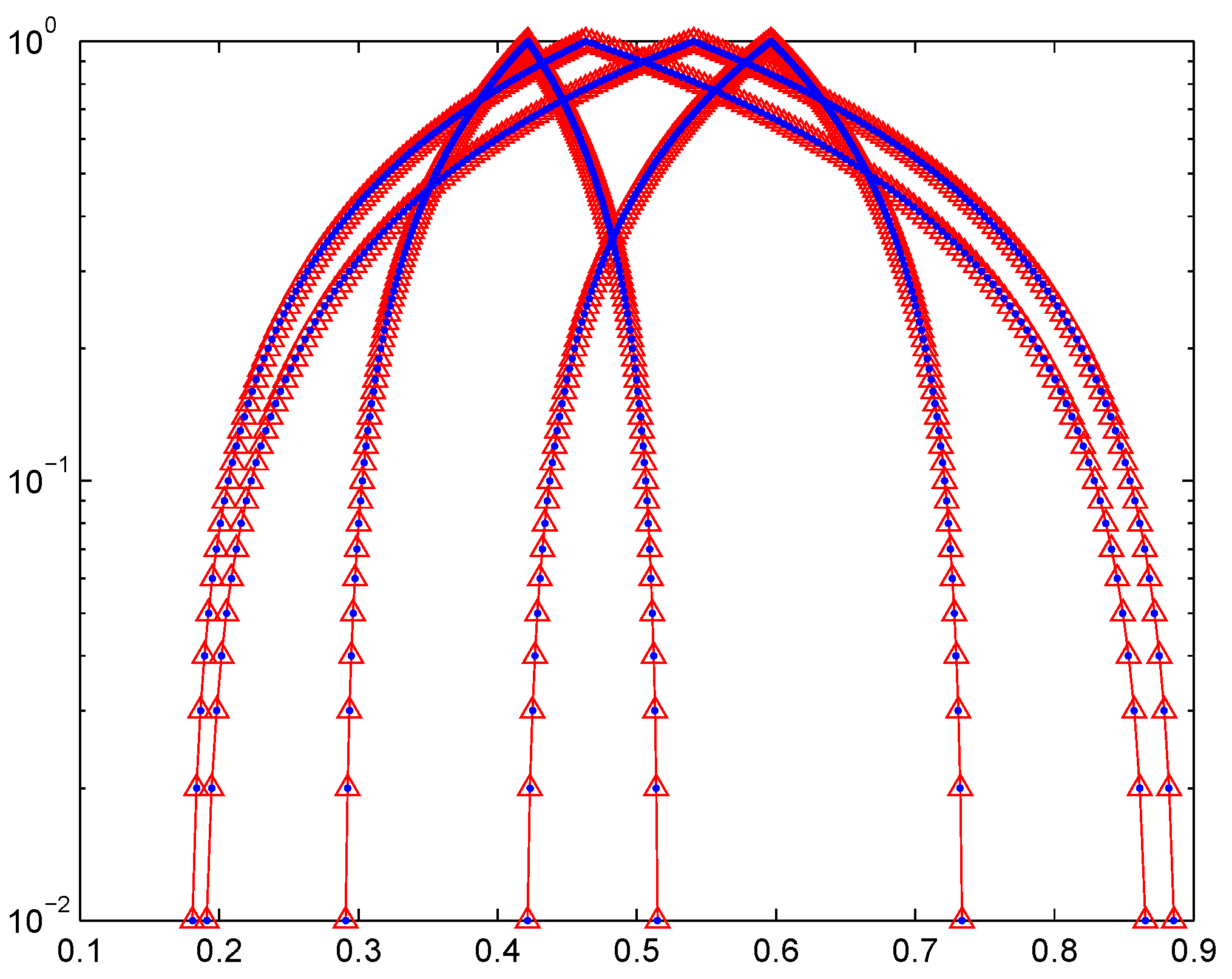

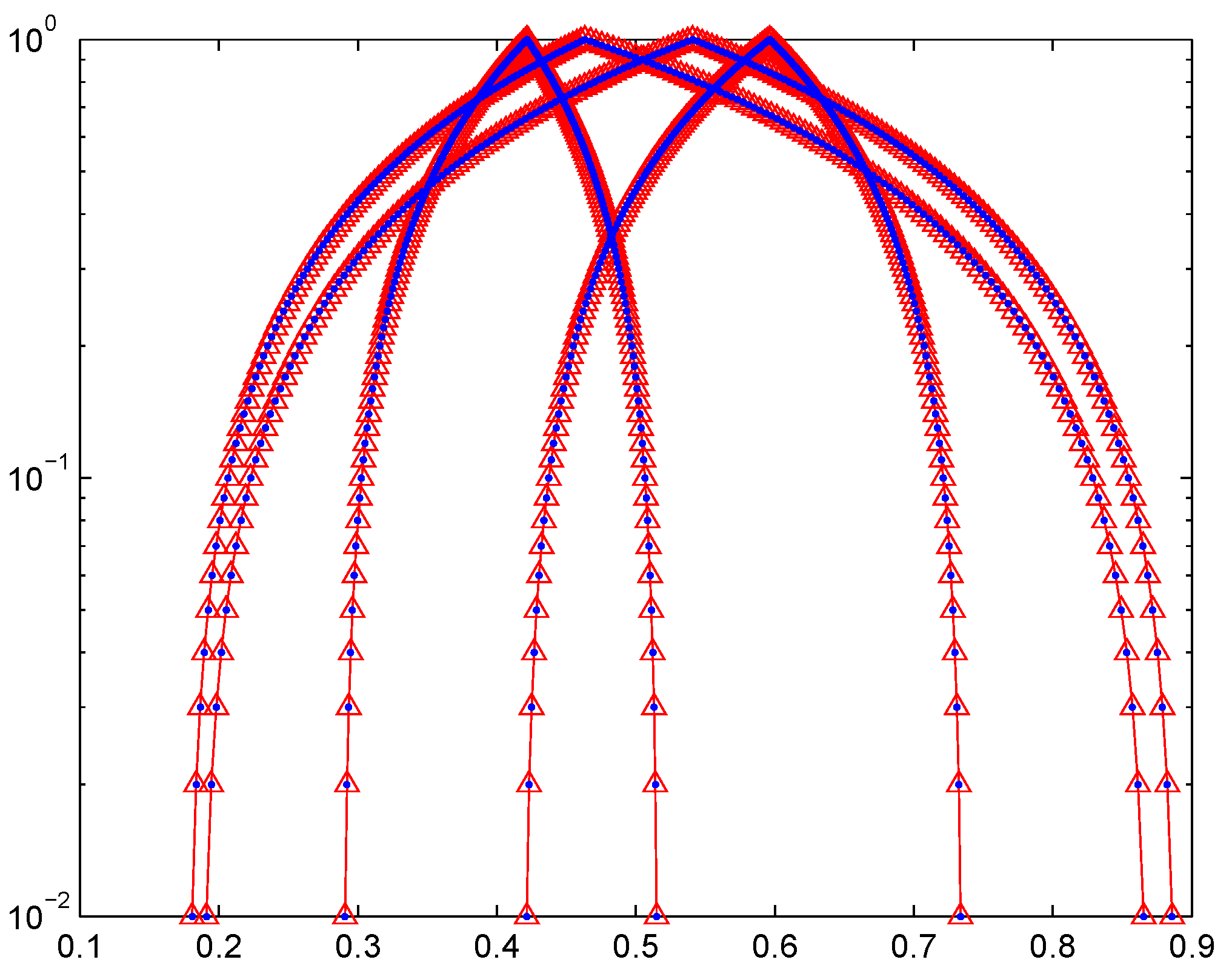
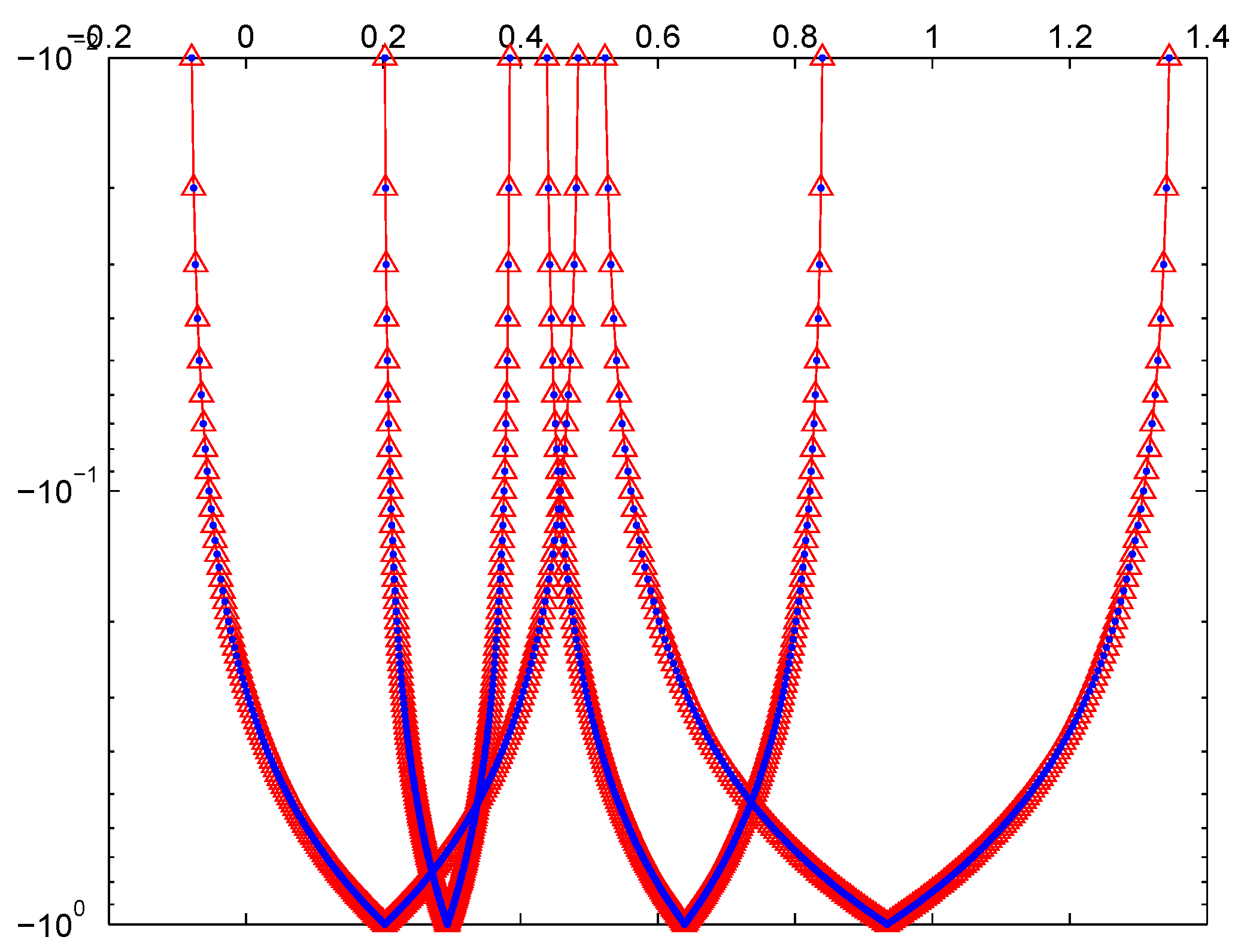
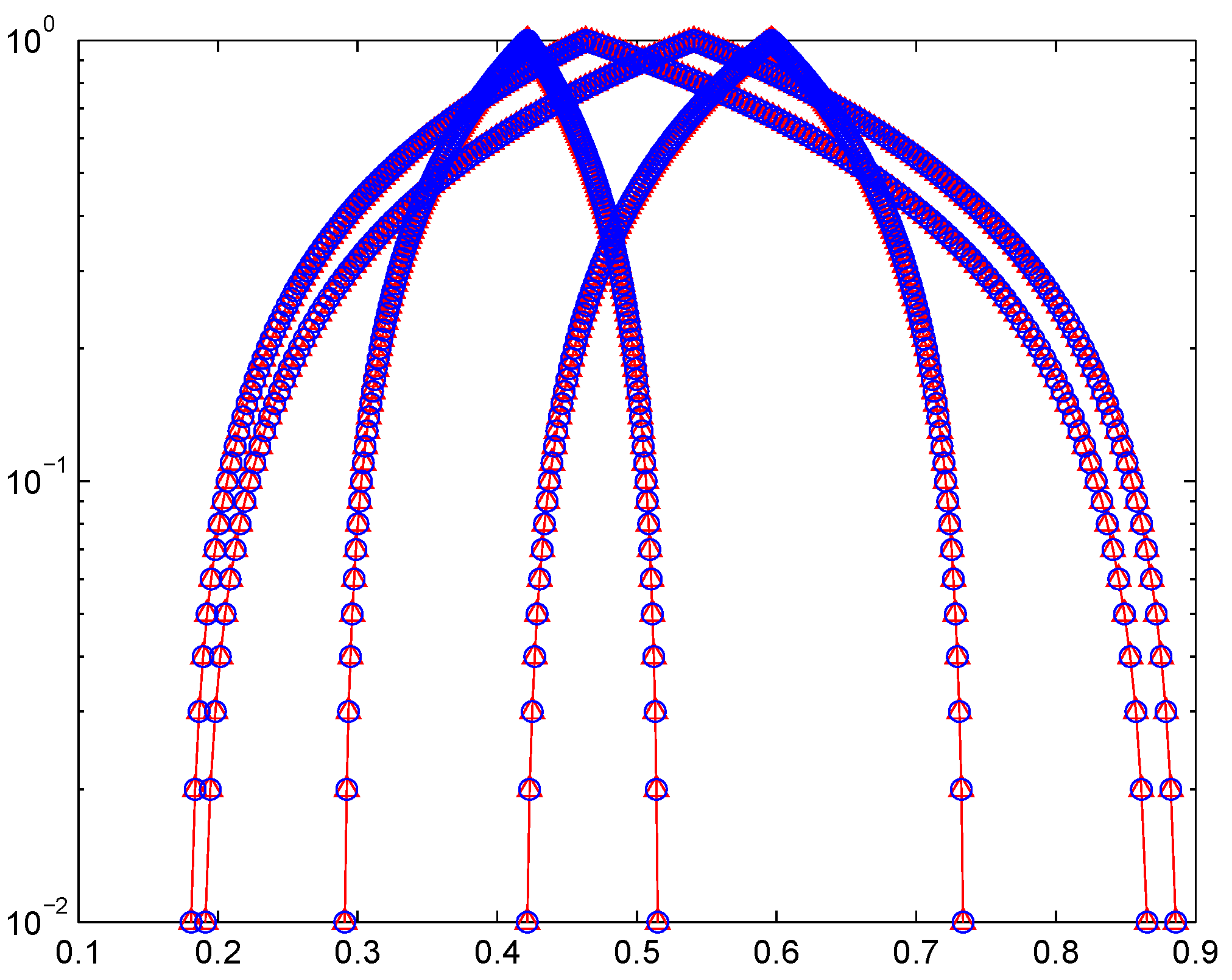
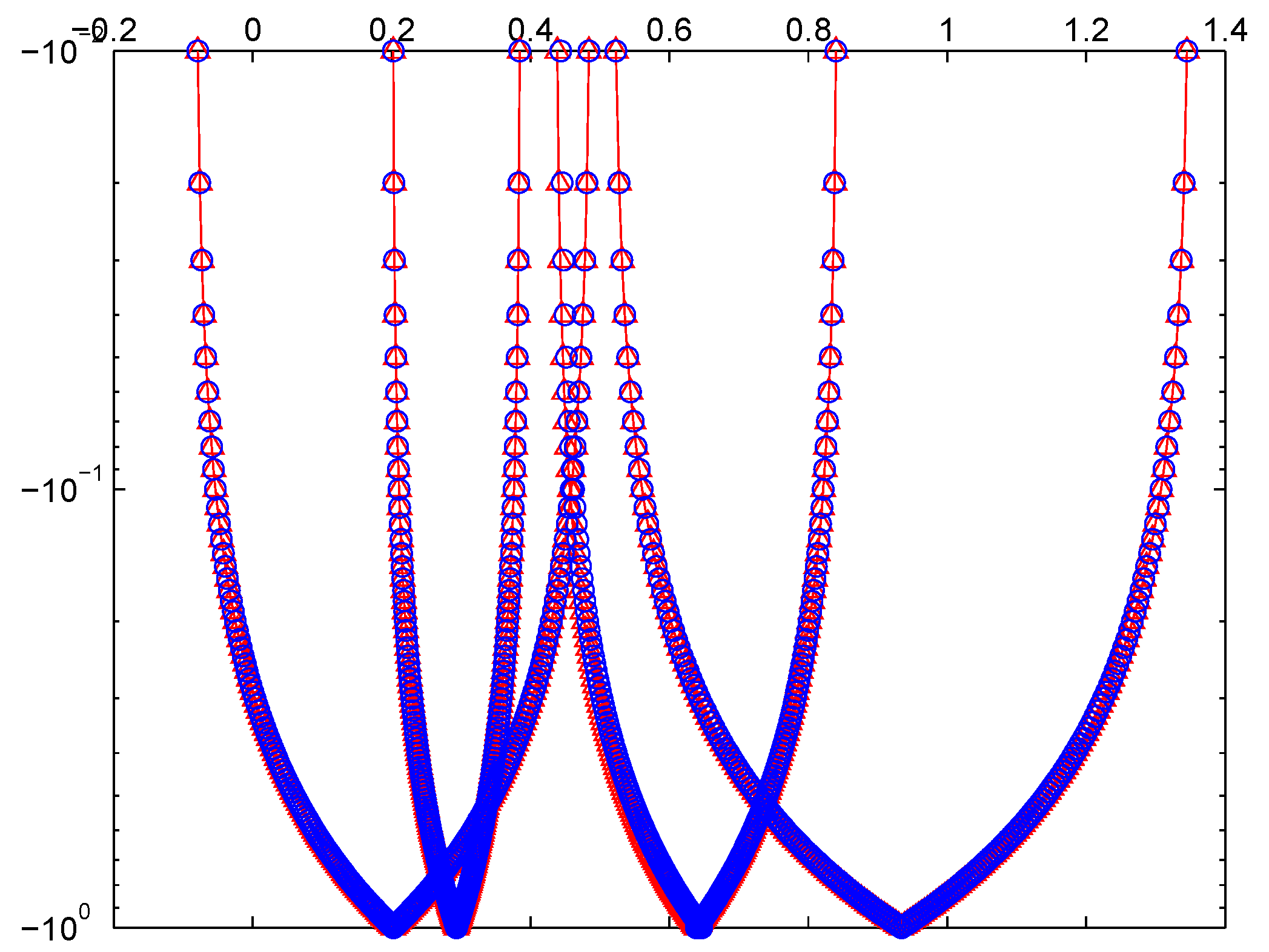
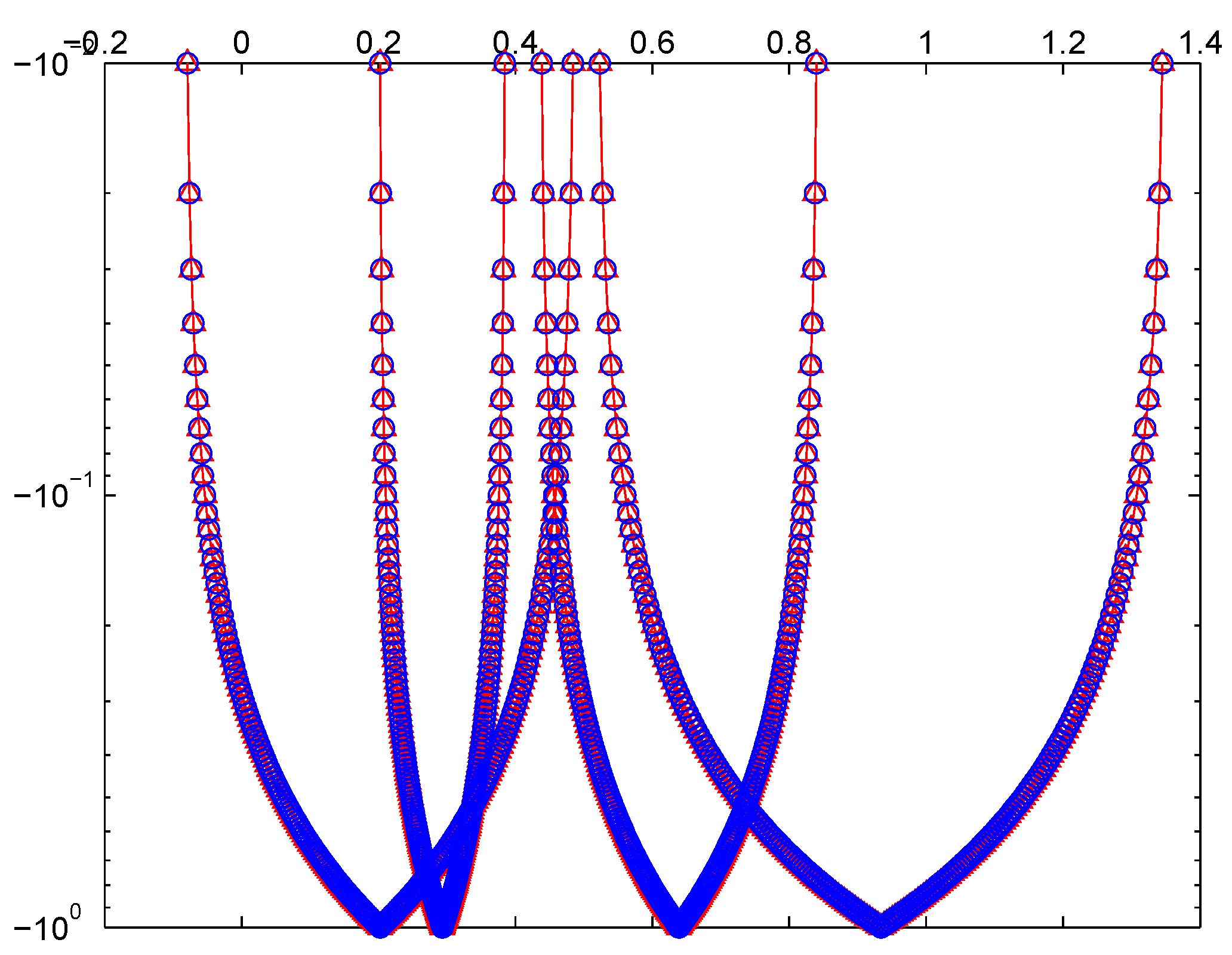
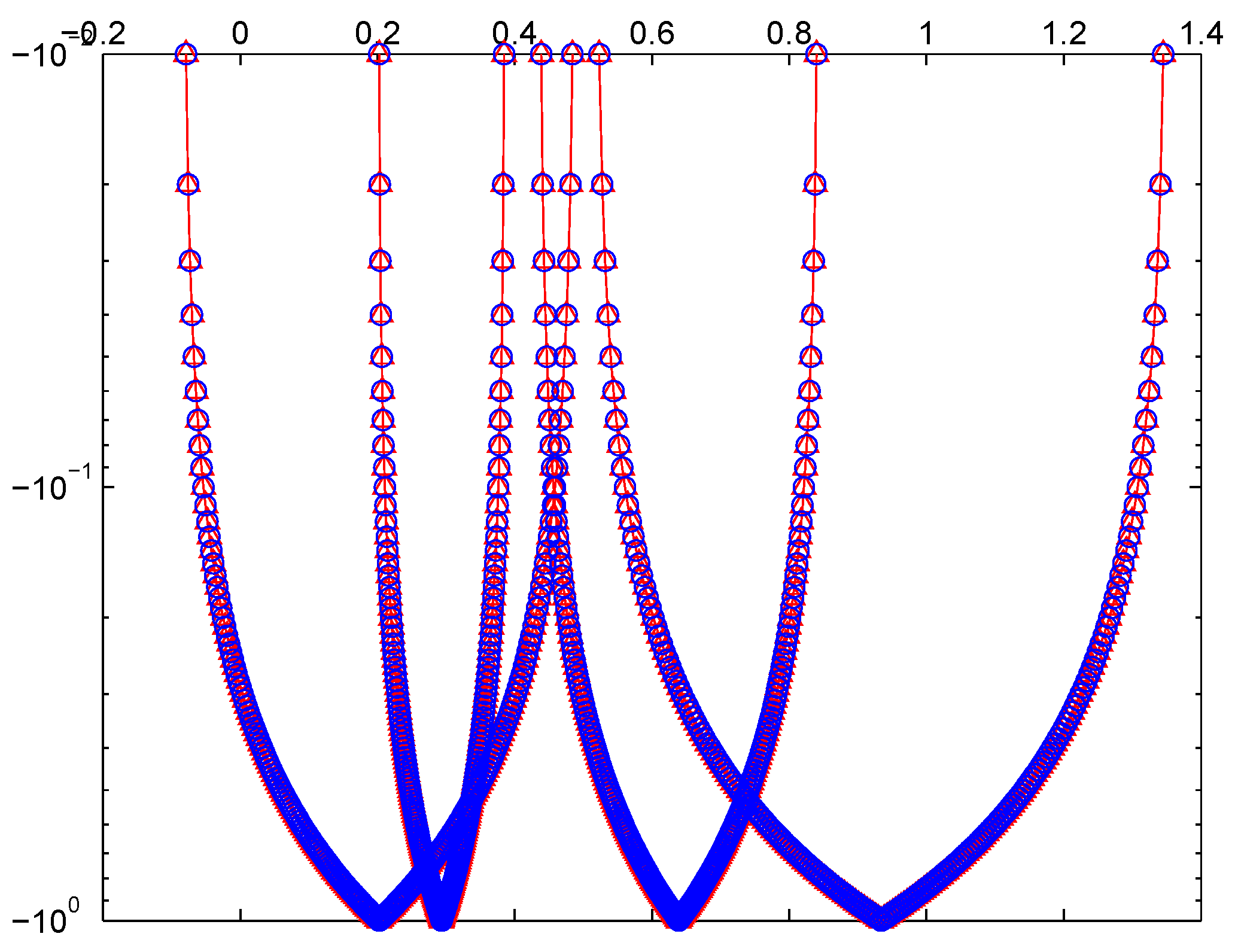
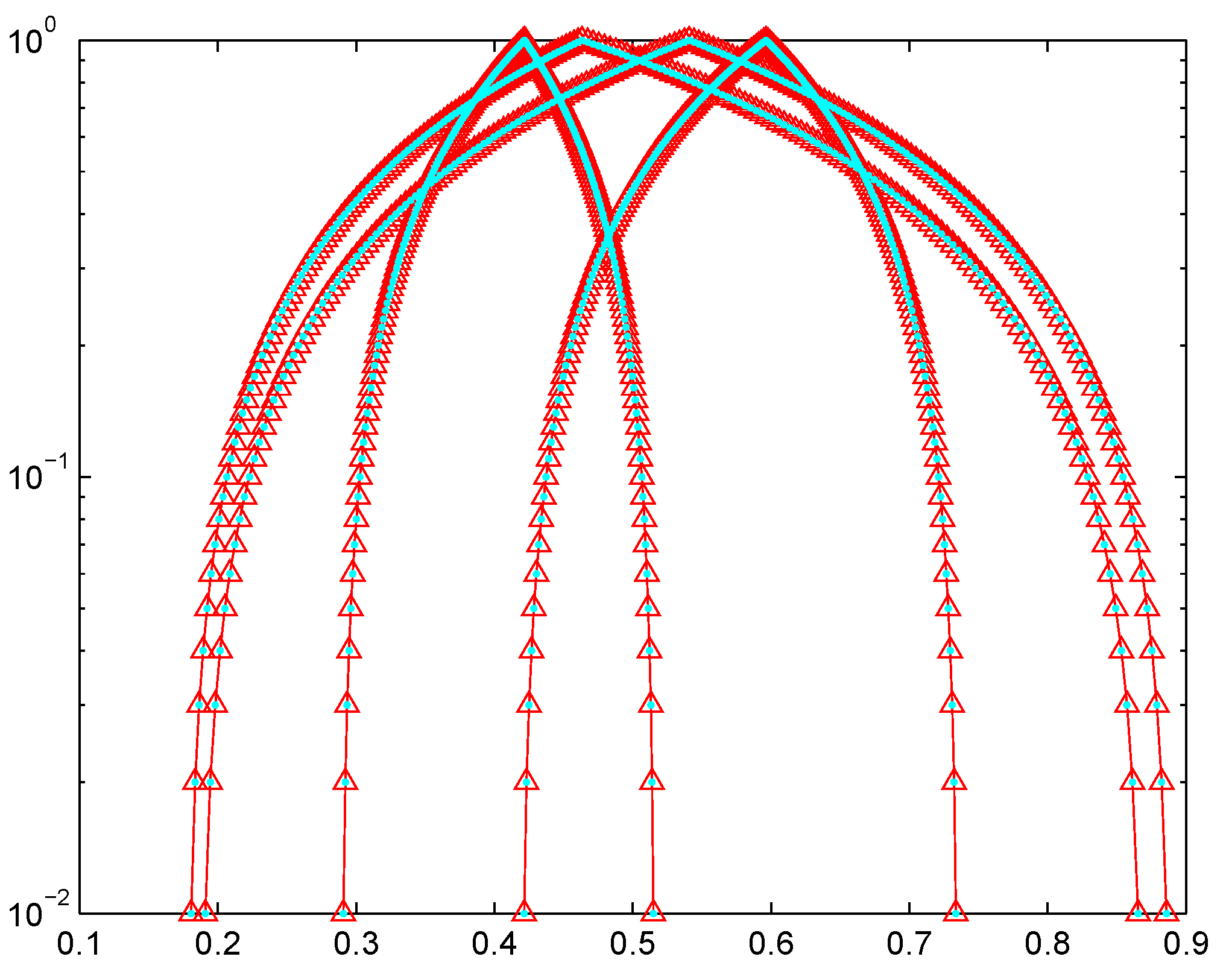
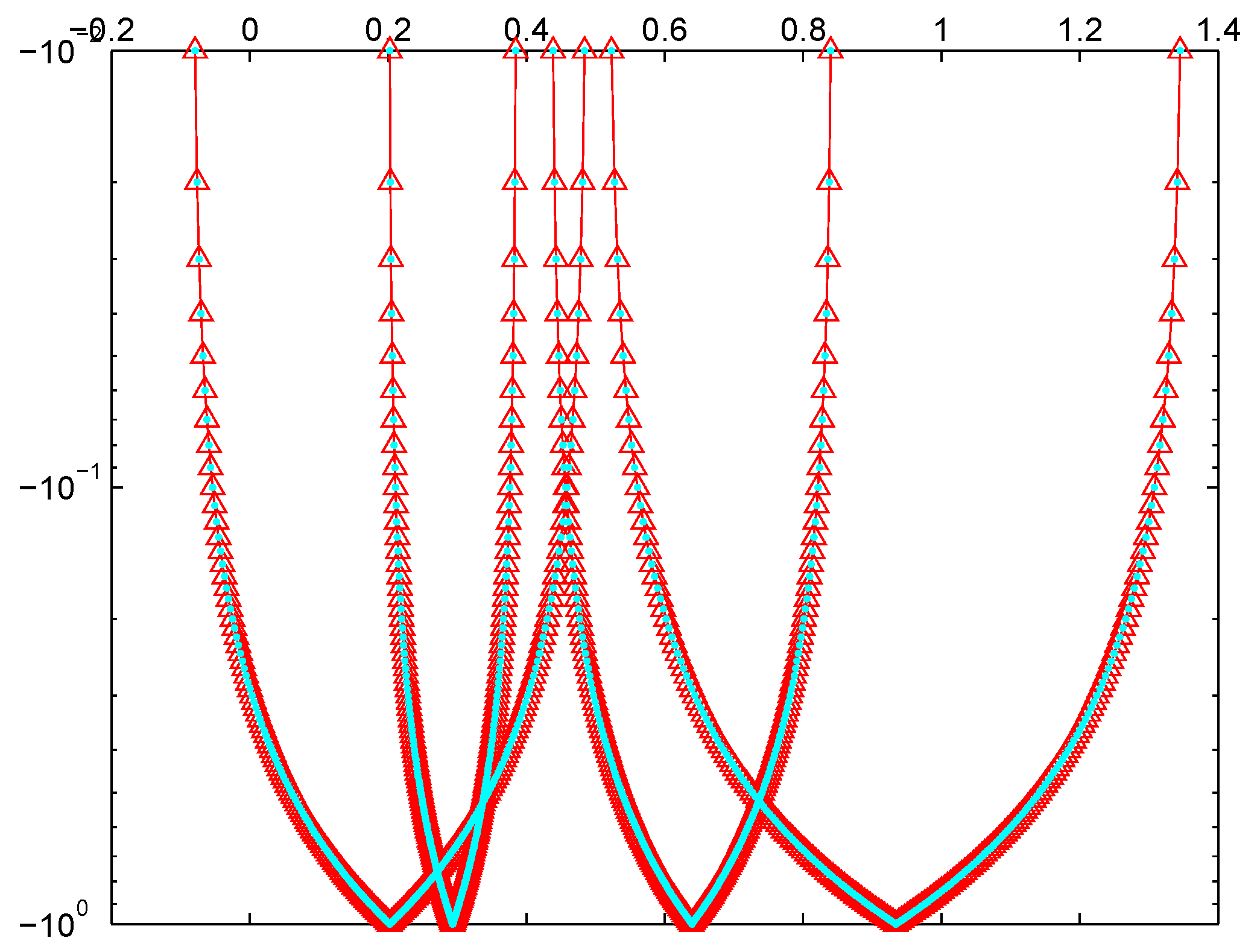
| Comparison Results for Example 1 | |||
|---|---|---|---|
| Method | Parameter | Number of Iterations | Distance Based on Housdorff Metric |
| Jacobi | 20 | ||
| JOR | 10 | ||
| GS | 20 | ||
| EGS | 10 | ||
| SOR | 10 | ||
© 2019 by the authors. Licensee MDPI, Basel, Switzerland. This article is an open access article distributed under the terms and conditions of the Creative Commons Attribution (CC BY) license (http://creativecommons.org/licenses/by/4.0/).
Share and Cite
Akram, M.; Muhammad, G.; Koam, A.N.A.; Hussain, N. Iterative Methods for Solving a System of Linear Equations in a Bipolar Fuzzy Environment. Mathematics 2019, 7, 728. https://doi.org/10.3390/math7080728
Akram M, Muhammad G, Koam ANA, Hussain N. Iterative Methods for Solving a System of Linear Equations in a Bipolar Fuzzy Environment. Mathematics. 2019; 7(8):728. https://doi.org/10.3390/math7080728
Chicago/Turabian StyleAkram, Muhammad, Ghulam Muhammad, Ali N. A. Koam, and Nawab Hussain. 2019. "Iterative Methods for Solving a System of Linear Equations in a Bipolar Fuzzy Environment" Mathematics 7, no. 8: 728. https://doi.org/10.3390/math7080728
APA StyleAkram, M., Muhammad, G., Koam, A. N. A., & Hussain, N. (2019). Iterative Methods for Solving a System of Linear Equations in a Bipolar Fuzzy Environment. Mathematics, 7(8), 728. https://doi.org/10.3390/math7080728





